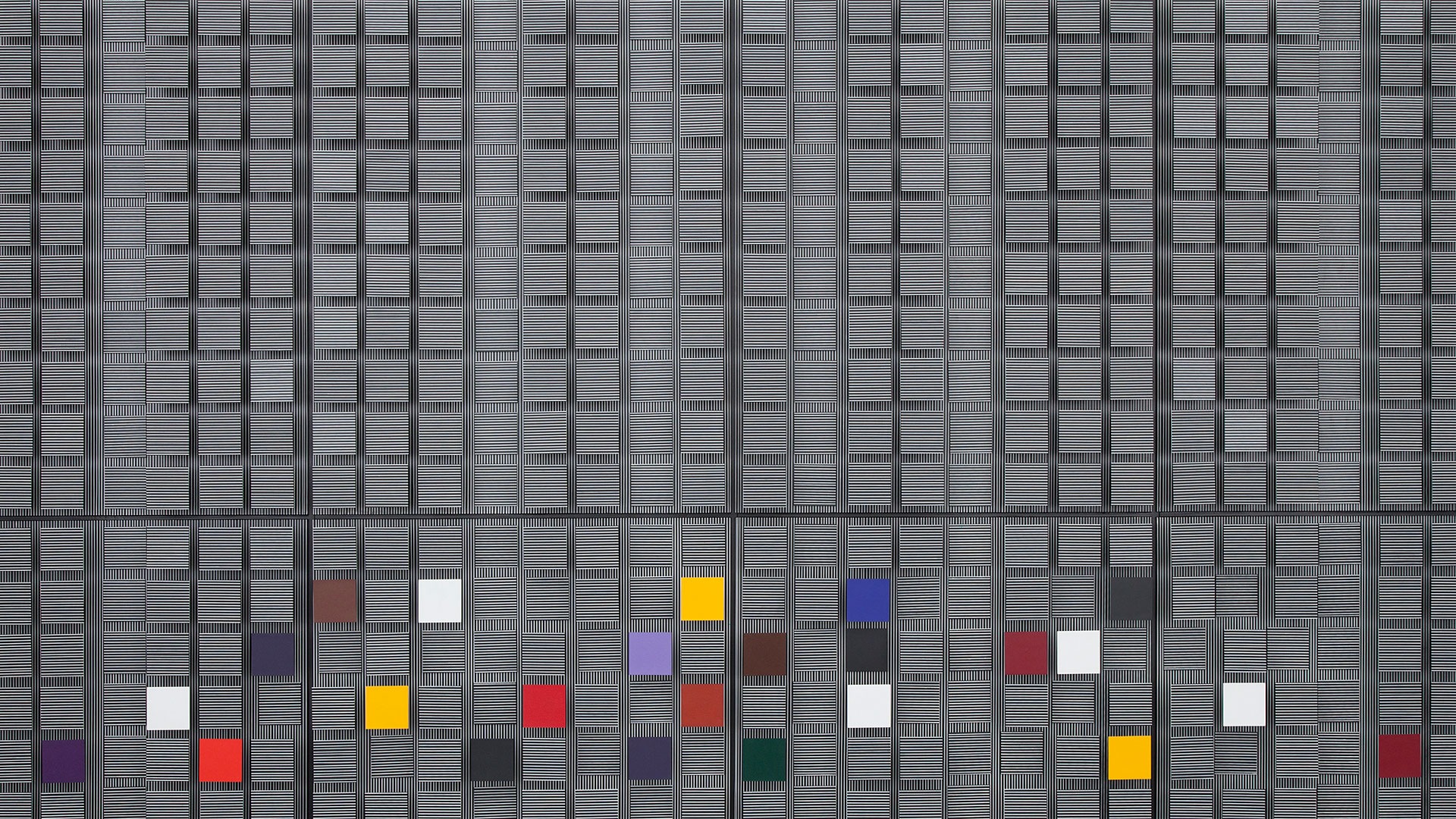Soto
The Fourth Dimension
18 Oct 2019 - 09 Feb 2020

Jesús Rafael Soto
Sans titre (Untitled), 1996
Acrylic Paint on Wood and metal, 203 x 405 cm
Private collection © Jesús Rafael Soto, VEGAP, Bilbao, 2019
Sans titre (Untitled), 1996
Acrylic Paint on Wood and metal, 203 x 405 cm
Private collection © Jesús Rafael Soto, VEGAP, Bilbao, 2019
SOTO
The Fourth Dimension
18 October 2019 - 9 February 2020
Curator: Manuel Cirauqui
This exhibition presents a retrospective survey of the work of Jesús Rafael Soto (b. 1923, Ciudad Bolívar, Venezuela; d. 2005, Paris). Structured around his concept of the aesthetic experience in terms of temporality, intensity, and viewer participation, Soto. The Fourth Dimension offers a rare opportunity to re-examine the career of a visionary figure who transformed the art of the second half of the 20th century. Over a career spanning more than five decades, Soto played a fundamental role in the redefinition of the social scope and function of the work of art. Breaking away in the 1950s from the conventional separation of painting and sculpture, his practice moved progressively beyond the visual field to become emblematic of the radical shift undergone by the art object in subsequent years. Transcending the optical research of his early work, he formed part of the first group of kinetic artists in Paris together with Jean Tinguely, Iacov Agam, and Victor Vasarely. He also associated himself with experimental groups of international importance, such as Zero and the circle that formed around the Signals gallery in London.
In 1967, Soto started working on his series of Penetrables, large cubic structures made with plastic or metal filaments, which were to occupy him until the end of his career. At the same time, he continued to produce paintings and sculptures whose participative potential is developed without requiring complete access to the interior of the work for the viewer, who nevertheless always intervenes to set it in motion. Until the end of his life, Soto worked on in his studio while accepting numerous large-scale commissions for public areas and institutions around the world.
The idea of a “fourth dimension” evokes the unity of space and duration, the visual form and the temporal experience, as well as transcendence and hyperspace, and is one of the key concepts inherited by the artists of the mid-20th century from the period of quasi-Utopian spirituality of the modernist avant-gardes. Soto believed that artists should employ their own techniques and strategies in a field of investigation shared with science and philosophy.
To accompany the exhibition, the Guggenheim Museum Bilbao is publishing an illustrated catalogue featuring new scholarship on Soto’s legacy and impact on recent art history, alongside reproductions of unpublished archival material and historical documents.
The Fourth Dimension
18 October 2019 - 9 February 2020
Curator: Manuel Cirauqui
This exhibition presents a retrospective survey of the work of Jesús Rafael Soto (b. 1923, Ciudad Bolívar, Venezuela; d. 2005, Paris). Structured around his concept of the aesthetic experience in terms of temporality, intensity, and viewer participation, Soto. The Fourth Dimension offers a rare opportunity to re-examine the career of a visionary figure who transformed the art of the second half of the 20th century. Over a career spanning more than five decades, Soto played a fundamental role in the redefinition of the social scope and function of the work of art. Breaking away in the 1950s from the conventional separation of painting and sculpture, his practice moved progressively beyond the visual field to become emblematic of the radical shift undergone by the art object in subsequent years. Transcending the optical research of his early work, he formed part of the first group of kinetic artists in Paris together with Jean Tinguely, Iacov Agam, and Victor Vasarely. He also associated himself with experimental groups of international importance, such as Zero and the circle that formed around the Signals gallery in London.
In 1967, Soto started working on his series of Penetrables, large cubic structures made with plastic or metal filaments, which were to occupy him until the end of his career. At the same time, he continued to produce paintings and sculptures whose participative potential is developed without requiring complete access to the interior of the work for the viewer, who nevertheless always intervenes to set it in motion. Until the end of his life, Soto worked on in his studio while accepting numerous large-scale commissions for public areas and institutions around the world.
The idea of a “fourth dimension” evokes the unity of space and duration, the visual form and the temporal experience, as well as transcendence and hyperspace, and is one of the key concepts inherited by the artists of the mid-20th century from the period of quasi-Utopian spirituality of the modernist avant-gardes. Soto believed that artists should employ their own techniques and strategies in a field of investigation shared with science and philosophy.
To accompany the exhibition, the Guggenheim Museum Bilbao is publishing an illustrated catalogue featuring new scholarship on Soto’s legacy and impact on recent art history, alongside reproductions of unpublished archival material and historical documents.
